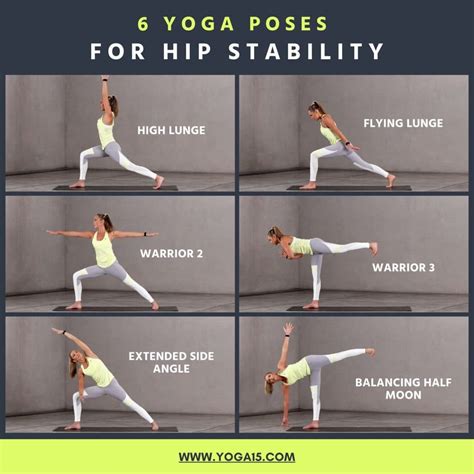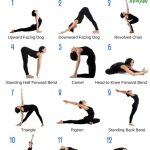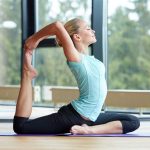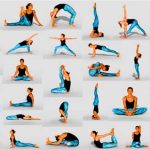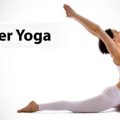Top 6 Yoga Poses to Boost Hip Flexibility: A Complete Guide
Improving hip flexibility is essential for maintaining overall mobility, preventing injuries, and enhancing athletic performance. Whether you’re dealing with tight hips from prolonged sitting or want to deepen your yoga practice, these six yoga poses will help you achieve greater hip flexibility. This guide will not only introduce the poses but will provide step-by-step instructions, explain the muscles involved, and offer modifications for all skill levels.
Introduction: Why Hip Flexibility Matters
Many of us lead sedentary lifestyles, sitting for long hours at desks or in cars, which can lead to tight hips. Tight hip flexors can result in lower back pain, poor posture, and limited range of motion, impacting everything from everyday movements to athletic performance. This guide will explore how yoga can help open the hips, release tension, and improve flexibility, offering a holistic approach to body mobility and alignment. Additionally, we’ll discuss the anatomical and practical benefits of flexible hips for both beginners and advanced yoga practitioners.
Key Concepts: Understanding Hip Flexibility
- Hip Anatomy: The hip joint is a ball-and-socket joint, one of the largest and most complex in the body. It involves the hip flexors, including muscles like the iliopsoas (psoas major and iliacus), the rectus femoris, and sartorius.
- Mobility vs. Flexibility: Flexibility refers to the ability of a muscle to lengthen, while mobility involves the range of motion around a joint. These poses target both to increase overall functionality.
- Muscle Groups Involved: In addition to the hip flexors, these poses engage other key muscle groups like the glutes, hamstrings, quads, and lower back.
- Consistency: Like any fitness routine, improving hip flexibility requires consistent practice over time.
Historical Context: The Yoga Tradition of Hip Opening
In traditional yoga practices, hip-opening poses have been regarded as essential for achieving deeper meditative states. In ancient yogic teachings, it’s believed that emotional stress is stored in the hips, and by releasing tension in this area, practitioners can not only improve flexibility but also experience emotional release and mental clarity. Modern yoga continues to emphasize the importance of hip flexibility for both physical and mental well-being, reinforcing the mind-body connection.
Current State Analysis: Tight Hips and Modern Lifestyles
Modern lifestyles, particularly sedentary habits, are contributing to an epidemic of tight hips. Prolonged sitting shortens the hip flexors, weakening the gluteal muscles and creating an imbalance that can affect posture and overall mobility. Incorporating hip-opening yoga poses into your routine can help counteract the effects of daily activities like sitting and driving, helping to restore balance and mobility in the body.
Practical Applications: Six Yoga Poses to Enhance Hip Flexibility
1. Pigeon Pose (Eka Pada Rajakapotasana)
How to do it: Begin in a downward-facing dog. Bring your right knee forward toward your right wrist while sliding your left leg straight behind you. Make sure your hips remain square to the mat. Keep your chest lifted, or for a deeper stretch, fold forward over your front leg.
- Muscles Worked: Glutes, hip flexors, and lower back.
- Modifications: Use a yoga block under the front hip if you’re feeling too much strain.
- Benefits: Deeply stretches the hip flexors and outer hips, releasing tension in these areas.
2. Bound Angle Pose (Baddha Konasana)
How to do it: Sit with your legs extended in front of you. Bend your knees and bring the soles of your feet together. Hold onto your feet or ankles and sit up tall. Gently press your knees toward the ground to feel a stretch in your inner thighs and hips.
- Muscles Worked: Inner thighs, hip flexors, and groin muscles.
- Modifications: Place blocks or folded blankets under your knees for support.
- Benefits: Opens the hips and groin, increases circulation, and helps relieve tension.
3. Garland Pose (Malasana)
How to do it: Stand with your feet slightly wider than hip-width apart. Squat down as low as you can, bringing your hands to prayer position at your chest. Use your elbows to gently press your knees apart.
- Muscles Worked: Hip flexors, groin, lower back, and calves.
- Modifications: Place a blanket or yoga block under your heels if they don’t reach the ground.
- Benefits: Improves hip mobility and stretches the groin area.
4. Lizard Pose (Utthan Pristhasana)
How to do it: Start in a low lunge with your hands inside your front foot. Lower your back knee to the floor and come down onto your forearms if you can. Keep your back leg straight and your chest open.
- Muscles Worked: Hip flexors, quads, and inner thighs.
- Modifications: Use blocks under your forearms for support if needed.
- Benefits: Opens the hips and stretches the inner thighs and groin.
5. Frog Pose (Bhekasana)
How to do it: Begin on all fours. Slowly walk your knees out to the sides, keeping your shins parallel to the mat. Lower your torso toward the ground, resting on your forearms or chest.
- Muscles Worked: Hip flexors, inner thighs, and groin.
- Modifications: Place blankets under your knees for cushioning if needed.
- Benefits: Provides a deep stretch to the inner thighs and hips, releasing tension and improving mobility.
6. Reclined Cow Face Pose (Supta Gomukhasana)
How to do it: Lie on your back and cross your right knee over your left. Reach your hands for your feet or ankles and gently pull them toward you, feeling the stretch in your outer hips.
- Muscles Worked: Outer hips, glutes, and lower back.
- Modifications: If this pose feels too intense, simply hold your shins rather than your feet.
- Benefits: Targets the outer hips and glutes, releasing tension and improving flexibility in these areas.
Case Studies: Real-Life Benefits of Hip-Opening Poses
Several studies have shown that incorporating hip-opening yoga poses into regular practice can improve both athletic performance and general well-being. In one case, a marathon runner who added hip-opening poses to their routine experienced improved stride length and reduced injury risk. Another case involved a desk worker with chronic back pain finding significant relief after practicing these poses for just a few weeks.
Stakeholder Analysis: Who Benefits from Improved Hip Flexibility?
- Desk Workers: Those who sit for long periods may develop tight hips, and these poses can help counteract the damage caused by a sedentary lifestyle.
- Athletes: Runners, cyclists, and dancers benefit from greater hip flexibility, which helps enhance performance and reduce the risk of injury.
- Elderly: Older adults can maintain mobility and prevent falls by keeping their hips flexible and strong.
- Yoga Practitioners: Advanced poses often require hip flexibility, making these essential for deeper practice.
Implementation Guidelines: How to Incorporate Hip-Opening Poses into Your Routine
- Start Slow: If you’re new to yoga, begin with gentle modifications and gradually work your way into deeper stretches.
- Consistency is Key: Practice these poses at least 3-4 times a week for optimal results.
- Listen to Your Body: Never push yourself into a stretch that feels painful. Use props and modifications as needed.
- Warm-Up First: Always warm up your body before attempting deeper hip stretches to prevent injury.
Ethical Considerations: Yoga and Body Positivity
It’s essential to approach yoga with a body-positive mindset, recognizing that everyone’s flexibility and progress look different. The goal of hip-opening yoga is not to push your body beyond its limits but to gradually increase flexibility over time. Practitioners should avoid comparing their progress with others and instead focus on their own individual journey.
Limitations and Future Research
While yoga is a powerful tool for improving hip flexibility, it’s important to note that individual anatomy can affect how deeply one can access certain poses. Additionally, research is ongoing into how yoga can help alleviate chronic pain and mobility issues, and future studies will continue to explore the long-term benefits of hip-opening practices. More studies are needed to establish yoga’s role in preventing hip surgeries and improving recovery from hip injuries.
Expert Commentary
According to yoga instructors and physical therapists, hip-opening yoga poses offer a wide range of benefits beyond flexibility, including improved posture, reduced back pain, and enhanced athletic performance. Experts recommend that individuals who experience tight hips incorporate these poses into their routines, but caution that the poses should be practiced mindfully and consistently to achieve lasting results.
